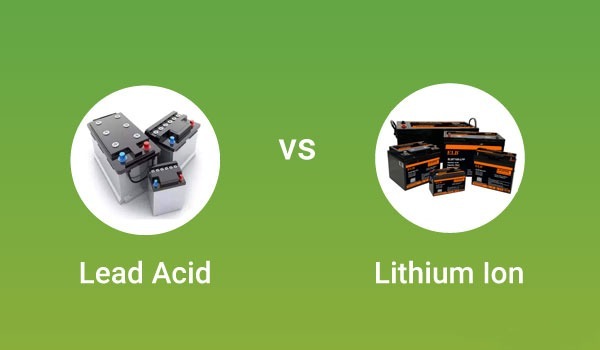- arrow_back Home
- keyboard_arrow_right Product Reviews
Lead-Acid vs Lithium Batteries
Product Reviews 1 blythe August 9, 2024

When it’s time to purchase a new battery for your motorcycle do you wonder which type, size or voltage do I need? How many cold cranking amps do I need? Motorcycle manufacturers provide recommended CCA Ratings for each model they produce. You can check your current battery or the owner’s manual for that information. There’s a lot to be said about the lead-acid battery as they have been around a long time and are known for their reliability and affordability. But what if I told you a Lithium based battery is an option? I’m sure you would have many questions.
Of course, when you think of lithium-ion batteries you may have heard stories of the batteries catching fire. These types of batteries are typically found in small electronic devices such as cell phones and laptops. Although somewhat new to the scene, compared to the lead-acid batteries, lithium-based motorcycle batteries are a lithium-iron-phosphate blend. This provides significantly more stability than the traditional lithium-ion battery. The pros and cons of different types of batteries can be daunting at times. The lead-acid battery is affordable but larger and heavier. The lithium battery is more compact and much lighter but will cost a bit more. The lead batteries are corrosive and bad for the environment if not properly disposed of. The lithium batteries are sealed. Lead batteries have a limited number of discharge/recharge cycles compared to the lithium, especially in hot temperatures. The cycle life is a primary benefit to the lithium batteries and the cost will in turn pay for itself. The duty life of a lithium battery is as much as 5,000 cycles vs. 1,000 to the lead batteries before declined performance.
Lithium battery failures mostly occur without a BMS (Battery Management System), the electronics that are necessary to the level that it shuts down the battery during an overcharge situation that could possibly lead to overheating. Although you can drain a lithium battery down to a level that it can’t recover from the BMS prevents that from happening so opt for a battery with this system as not all lithium batteries have BMS. You get what you pay for as they say.
As far as cold temps both batteries are affected by the cold. The longevity is 2-4 times more for a lithium battery than a lead battery. You have to start a lead battery right away before the voltage drops. The resistance of a lithium battery is higher in extreme cold, so you need to build up to the batteries full cranking power. The trick is to warm your battery first by putting a load on it. A headlight or heated gloves will help. The battery warms itself as it delivers the available electricity. During the winter months some have even disconnected the battery and brought it inside as it is much lighter and easier to store.
Another thing to consider is you will need a different charger for a lithium battery. You cannot use your lead battery charger for a lithium battery. However, you can use a lithium battery charger on a lead battery. So, if you were in the market for a new charger then it’s a win either way.
So, in conclusion, even though the lighter battery weight is a plus, the primary benefit of the lithium battery is the voltage they deliver, as well as a lower self dis-charge and better cold weather performance. With a higher resting voltage your bike will start more consistently and provide a hotter spark as well as the life cycle of the battery.
Copyright 2025 Leather & Lace MC - All Rights Reserved.


